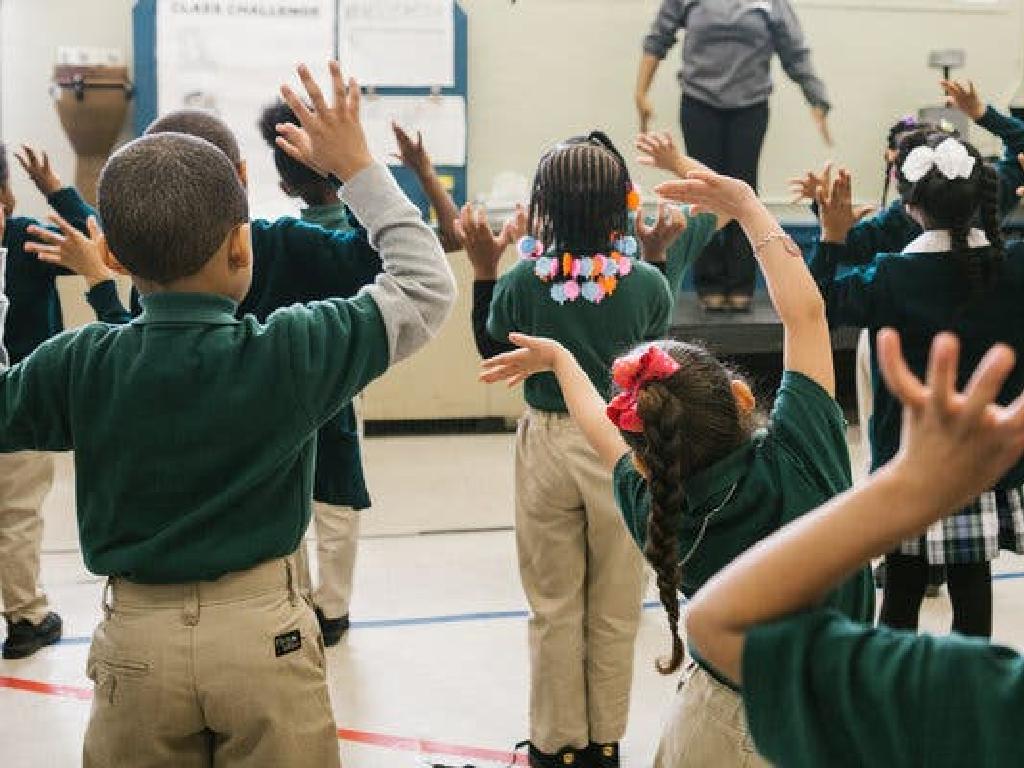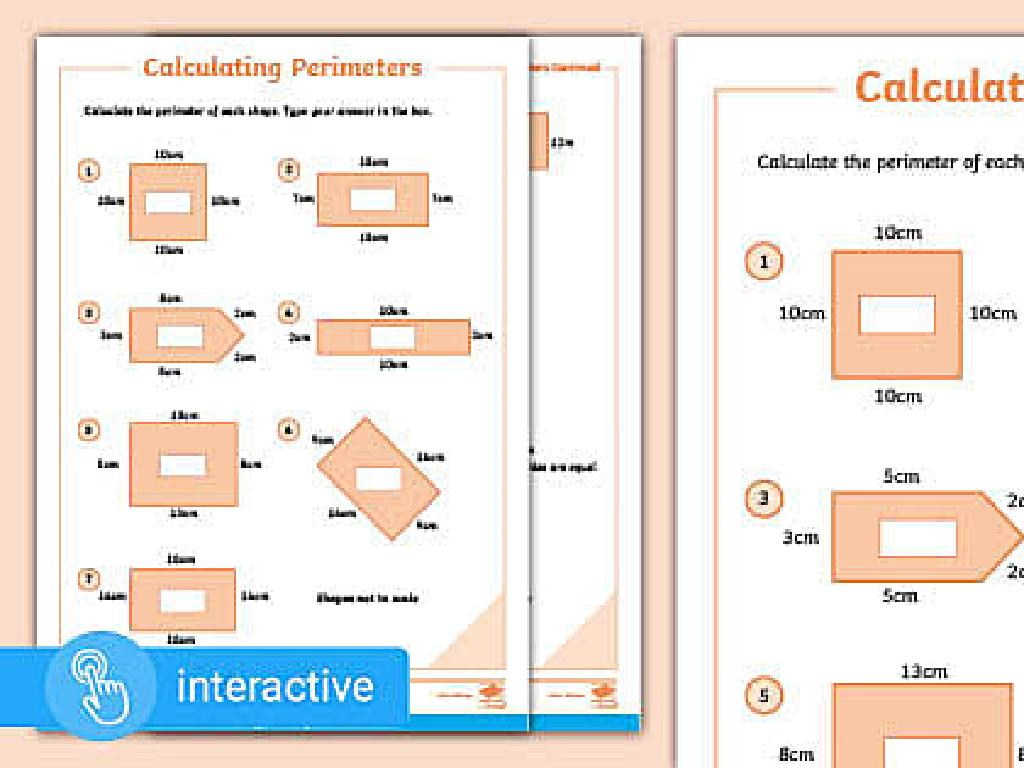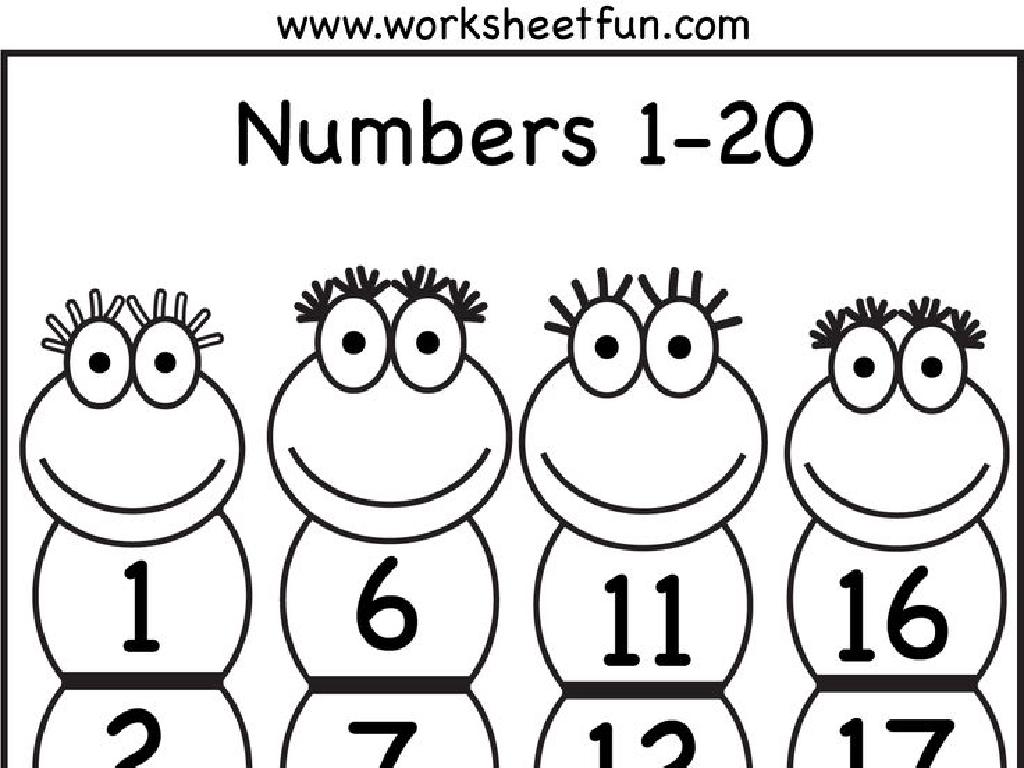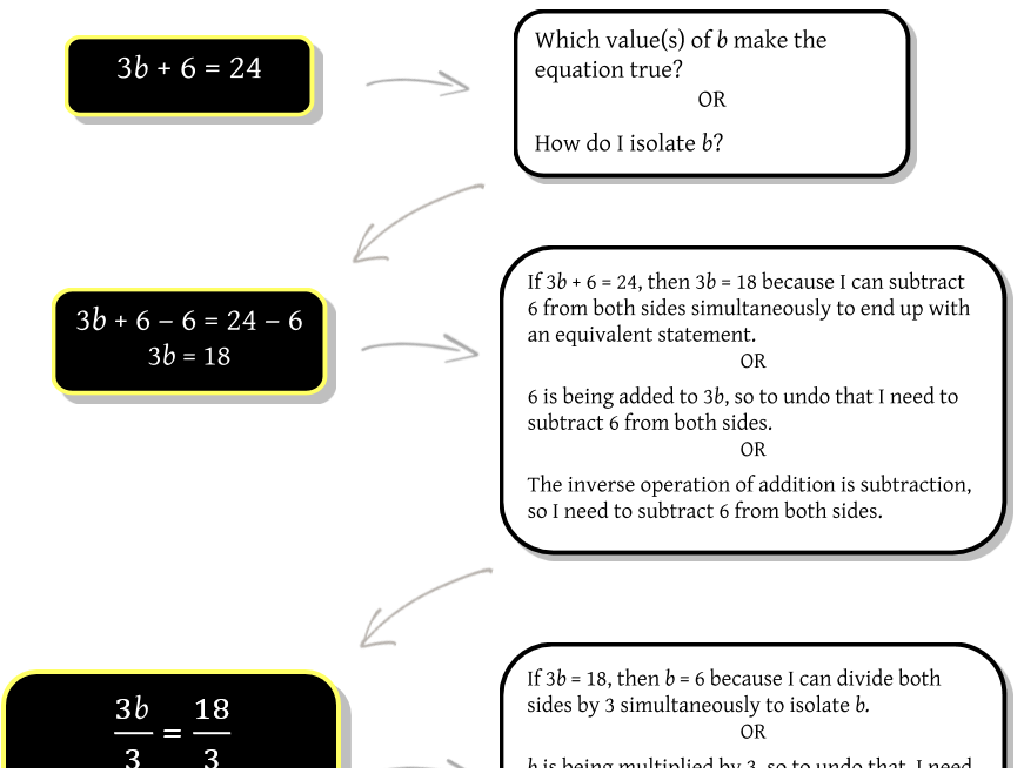Add And Subtract Mixed Numbers
Subject: Math
Grade: Sixth grade
Topic: Add And Subtract Fractions
Please LOG IN to download the presentation. Access is available to registered users only.
View More Content
Introduction to Mixed Numbers
– Understanding fractions and whole numbers
Fractions represent parts of a whole, while whole numbers are complete units.
– Defining mixed numbers
Mixed numbers combine whole numbers with fractions, like 2 1/2.
– Real-life examples of mixed numbers
For instance, 2 1/2 pizzas or 1 3/4 hours of a movie.
– Adding and subtracting mixed numbers
We can combine or separate these numbers by adding or subtracting both parts.
|
This slide introduces the concept of mixed numbers, which is a foundational element in understanding how to add and subtract fractions with whole numbers. Begin by explaining the difference between fractions and whole numbers, ensuring students are comfortable with each concept separately. Then, define mixed numbers and provide relatable examples that students might encounter in their daily lives, such as portions of food or durations of events. Finally, touch on the process of adding and subtracting mixed numbers, setting the stage for more detailed instruction in subsequent slides. Encourage students to think of their own examples of mixed numbers they’ve seen or used.
Visualizing Mixed Numbers with Pie Charts
– Understanding mixed numbers
– A mixed number combines a whole number with a fraction, like 2 1/2 pies
– Converting to improper fractions
– Multiply the whole number by the denominator, add the numerator, over the original denominator
– Practice with pie charts
– Look at different pie charts and write the mixed number each represents
– Recognize mixed numbers visually
– Use pie charts to identify and understand mixed numbers in a visual context
|
This slide introduces students to the concept of mixed numbers using pie charts, a visual tool that helps them understand the combination of whole numbers and fractions. Start by explaining what mixed numbers are and how they can be represented visually. Then, demonstrate the process of converting mixed numbers to improper fractions, which is a necessary skill for adding and subtracting them. Provide practice by showing pie charts and asking students to identify the mixed number represented. Encourage students to draw their own pie charts for given mixed numbers to reinforce the concept. This visual approach will help students grasp the idea of mixed numbers more concretely.
Adding Mixed Numbers
– Steps to add mixed numbers
– Convert to improper fractions, find common denominators, add and simplify.
– Example with like denominators
– 2 1/4 + 3 1/4: Convert to improper fractions (9/4 + 13/4), then add (22/4), simplify to 5 2/4.
– Example with unlike denominators
– 3 2/5 + 2 4/7: Find common denominator, convert (34/35 + 68/35), add (102/35), simplify to 2 32/35.
– Practice problem set
|
This slide introduces the concept of adding mixed numbers, which is a key skill in understanding fractions. Start by explaining the steps to convert mixed numbers to improper fractions, find a common denominator, and then add the fractions together. Use the examples to show how this process works with like and unlike denominators. The first example demonstrates a straightforward case with the same denominators, while the second deals with the additional step of finding a common denominator. Conclude with a set of practice problems for students to apply what they’ve learned. Encourage students to work through these problems in pairs or groups to facilitate peer learning.
Subtracting Mixed Numbers
– Steps to subtract mixed numbers
– Convert to improper fractions, find common denominators, subtract, simplify.
– Example with like denominators
– 5 2/3 – 3 2/3: Same denominators, just subtract the whole numbers and fractions.
– Example with unlike denominators
– 7 4/5 – 2 2/3: Different denominators, find a common one to subtract properly.
– Practice with different denominators
|
This slide introduces the concept of subtracting mixed numbers, a key skill in understanding fractions. Start by explaining the steps: converting mixed numbers to improper fractions, finding a common denominator, subtracting the fractions, and simplifying the result. Use the examples to show subtraction with like denominators (easy case) and unlike denominators (requires finding a common denominator). Encourage students to practice with additional problems, ensuring they understand how to handle different denominators. Provide guidance on simplifying results and converting back to mixed numbers if necessary.
Mixed Numbers: Addition & Subtraction Practice
– Solve mixed number addition problems
– Add fractions and whole numbers separately, e.g., 2 1/4 + 3 3/4
– Tackle subtraction with mixed numbers
– Remember to borrow if needed, e.g., 5 2/3 – 2 5/6
– Discuss solutions with a classmate
– Reflect on problem-solving strategies
– Think about the steps you took to find the answers
|
This slide is designed for a class activity where students will practice adding and subtracting mixed numbers. Provide a set of problems for students to solve independently, focusing on the technique of separating whole numbers from fractions. Encourage them to check their work by sharing answers with a partner, fostering peer learning. In the notes, offer guidance on common pitfalls, such as forgetting to simplify or not borrowing correctly when subtracting. Include 4-5 varied problems for each student to ensure a comprehensive understanding of the concepts. After sharing, lead a discussion on different strategies used to solve the problems, helping students to reflect on their learning process.
Class Activity: Mixed Numbers Relay
– Form teams for the relay
– Solve mixed number problems
– Add or subtract mixed numbers as a team challenge
– Each correct answer advances your team
– Correct solutions mean progress in the relay race
– Aim to be the first team to finish
|
This activity is designed to encourage teamwork and reinforce the concept of adding and subtracting mixed numbers. Divide the class into small groups and provide each team with a set of mixed number problems. Each team will solve the problems collaboratively, and for every correct answer, they will move forward in the relay. This could be represented by moving a marker on a board or taking a step forward in a physical space. The first team to solve all their problems correctly wins the relay. Ensure that the problems vary in difficulty and cover both addition and subtraction of mixed numbers. This will cater to different skill levels and ensure a comprehensive understanding of the topic. Have additional problems ready for early finishers or in case of a tie.
Wrapping Up: Mixed Numbers
– Review adding/subtracting mixed numbers
– Remember to find common denominators and convert to improper fractions.
– Emphasize practice and patience
– Mastery comes with time and repeated practice.
– Homework: Mixed Numbers Worksheet
– Complete the worksheet to reinforce today’s lesson.
– Keep practicing at home!
|
As we conclude today’s lesson on adding and subtracting mixed numbers, it’s crucial to recap the steps involved in the process. Remind students of the importance of finding common denominators and converting mixed numbers to improper fractions before performing operations. Emphasize that becoming proficient in math requires practice and patience, and mistakes are part of the learning process. Assign the provided worksheet for homework to give students the opportunity to apply what they’ve learned. Encourage them to try their best and remind them that practice is key to improvement. The next class will begin with a review of the homework to address any questions or difficulties encountered.






